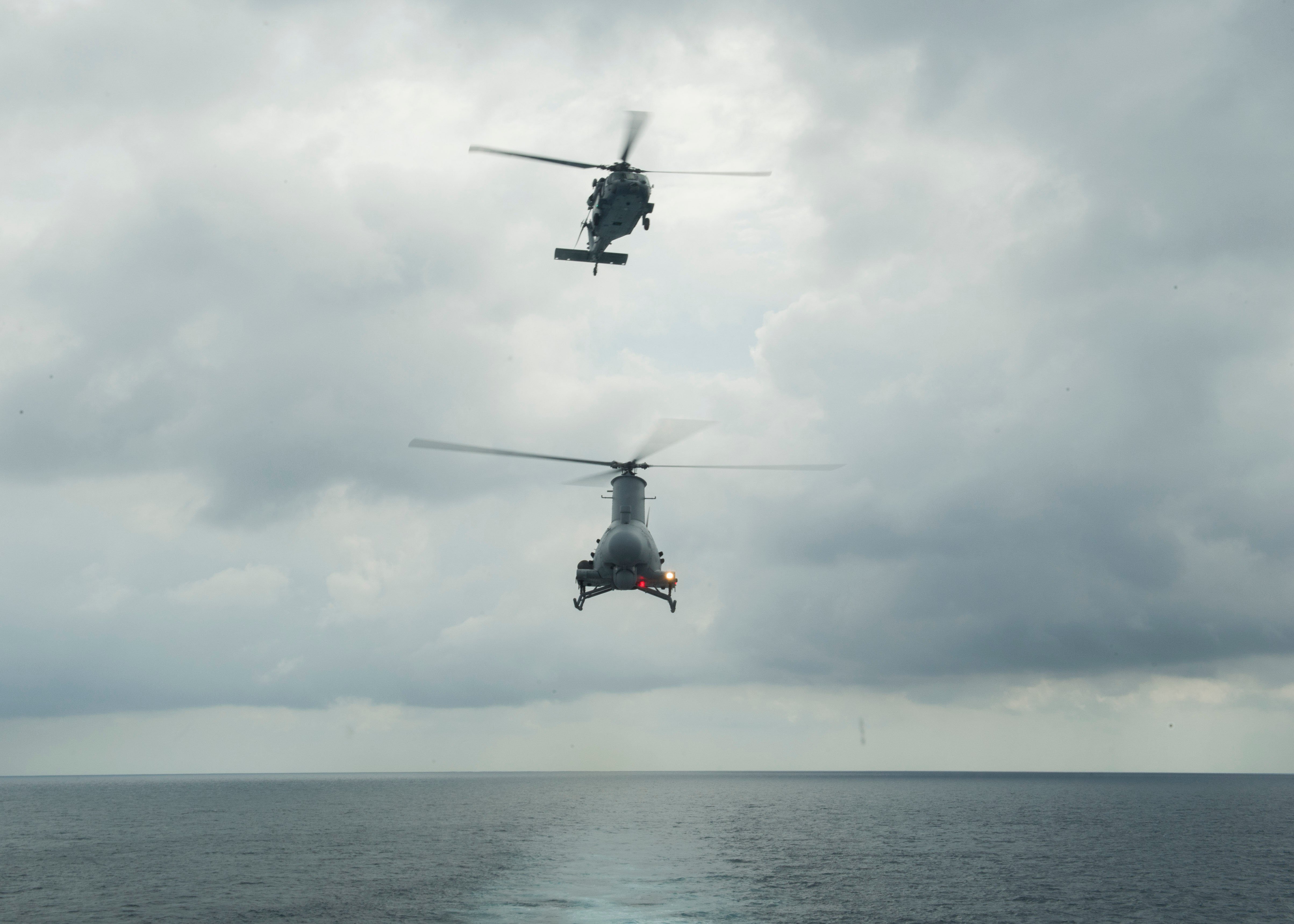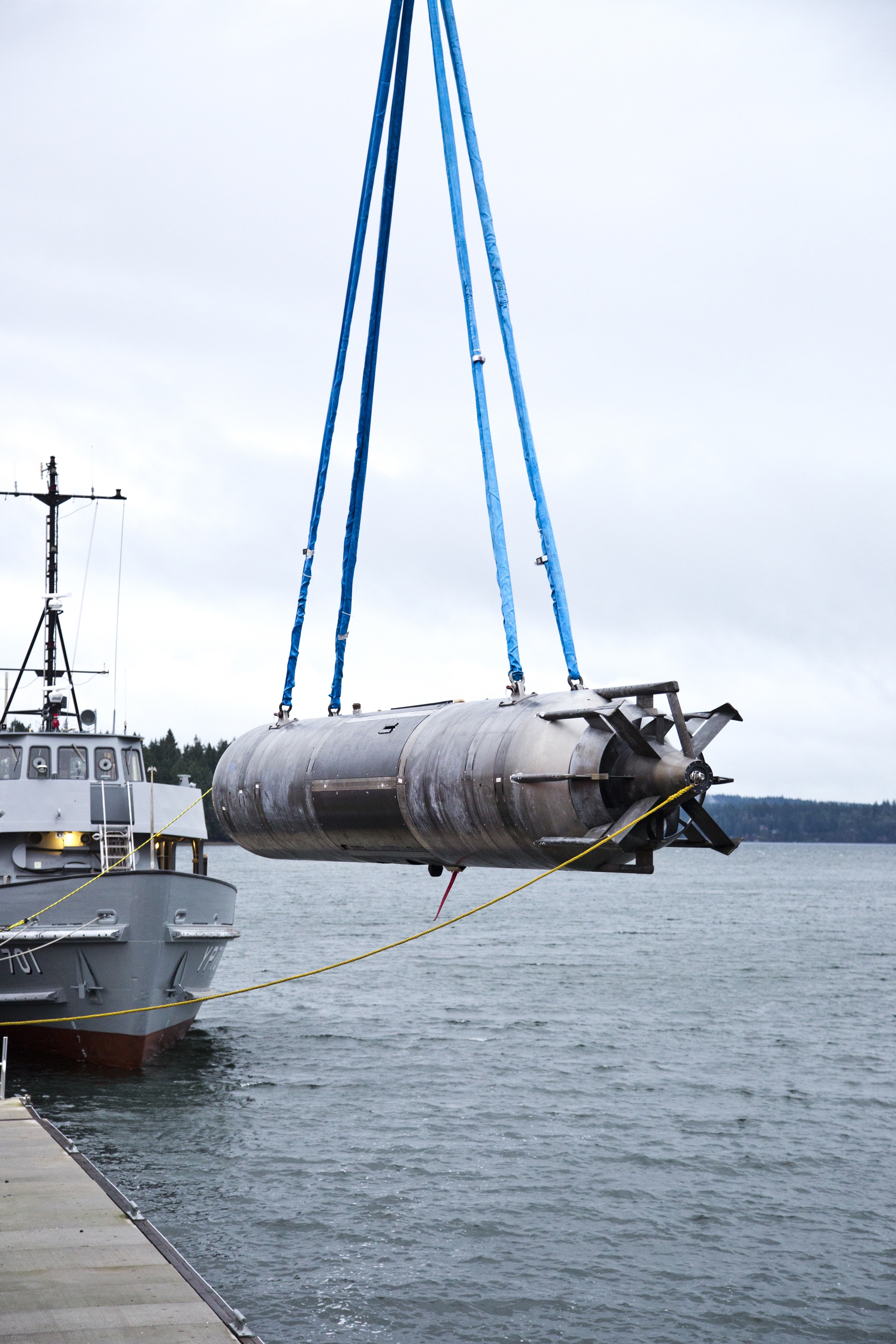
The Navy reorganized its Chief of Naval Operations staff (OPNAV) to eliminate the one-year-old Unmanned Warfare Systems directorate (OPAV N99) and instead will move unmanned systems into technology development or domain-based warfare directorates.
Vice Chief of Naval Operations Adm. Bill Moran emailed all flag officers late Tuesday to announce the reorganization, writing that “in conjunction with the recent OPNAV reorganization, the Warfare Systems Directorate (N9) has completed an internal reorganization with the goal of creating a leaner, more agile organization.”
The reorganization is not related to an ongoing headquarters reduction effort in the services and Defense Department and was not driven by a goal of saving money. Rather, the move is aimed at more efficiently integrating manned and unmanned systems, Navy spokeswoman Lt. Jackie Pau told USNI News today. The former head of OPNAV N99, Rear Adm. Robert Girrier, retired in mid-January ahead of the reorganization decision.
“This re-organization is the next step in the Navy’s ongoing process to mainstream the complementary warfighting effects of manned and unmanned warfare systems,” she said.
To accomplish that, the N99 office will merge with the Director of Warfare Integration (OPNAV N9I). That office, currently led by Rear Adm. Pete Fanta, will oversee unmanned integration, accelerated acquisition and oversight. Fanta’s office will work with acquisition program executive officers, resources sponsors and the fleet for its new oversight responsibilities, and will work with the research community and with Deputy Assistant Secretary of the Navy for Unmanned Systems (DASN UxS) Frank Kelley to accelerate prototype acquisition where possible.

Current unmanned programs of record will merge with the applicable resource sponsor – the Expeditionary Warfare (OPNAV N95), Surface Warfare (OPNAV N96), Undersea Warfare (OPNAV N97) and Air Warfare (OPNAV N98) directorates – Pau said. She added that no programs of record would be cut, slowed or otherwise affected by this reorganization. The office of the Director of Innovation, Technology Requirements and Test & Evaluation (OPNAV N94) – currently led by Rear Adm. Dave Hahn, who also serves as Chief of Naval Research and the head of the Office of Naval Research (ONR) – will assume rapid prototyping, experimentation and development (RPED) efforts on unmanned systems. Once those systems progress and become a program of record, they would transition to the applicable resource sponsor.
“Embedding unmanned RPED innovation under OPNAV N94, maturing unmanned system programs of record within traditional warfare resource sponsors, and oversight under N9I allows for more complete integration of unmanned platforms and system development across domains,” Pau told USNI News.
Programs that had fallen under N99 that will be moved elsewhere in N9 include:
- Rapid Prototyping Experimentation and Development (Unmanned Systems)
- Sensor-Hosting Autonomous Remote Craft
- Low-Cost (Unmanned Air Systems (UAS)) Swarming Technology (LOCUST)
- Heterogeneous Collaborative Unmanned Systems
- Large Displacement Unmanned Undersea Vehicle (LDUUV)
- Advanced Undersea Prototyping
- Common Control System (CCS)
- Common System Interface (which allows CCS to talk to established system interfaces)
- Carrier-based Unmanned Aerial Vehicle





